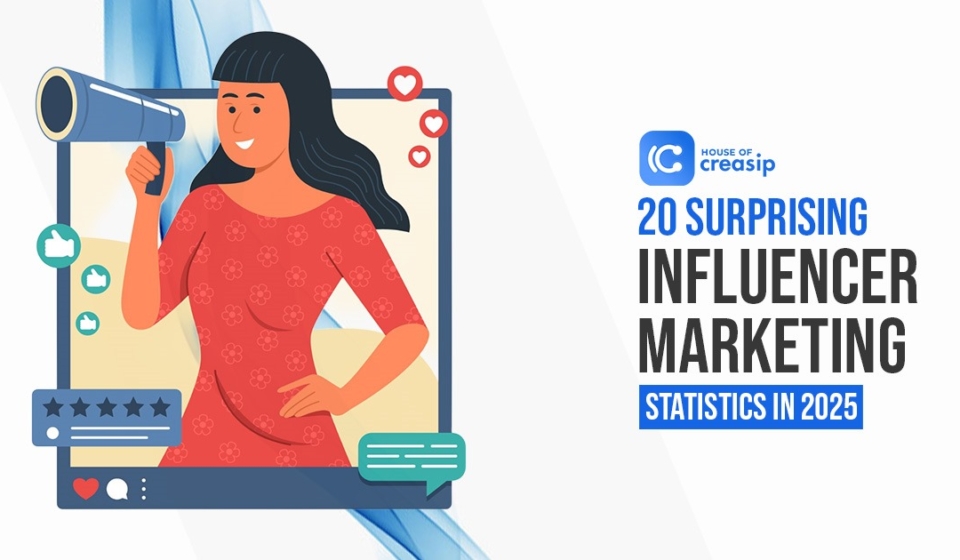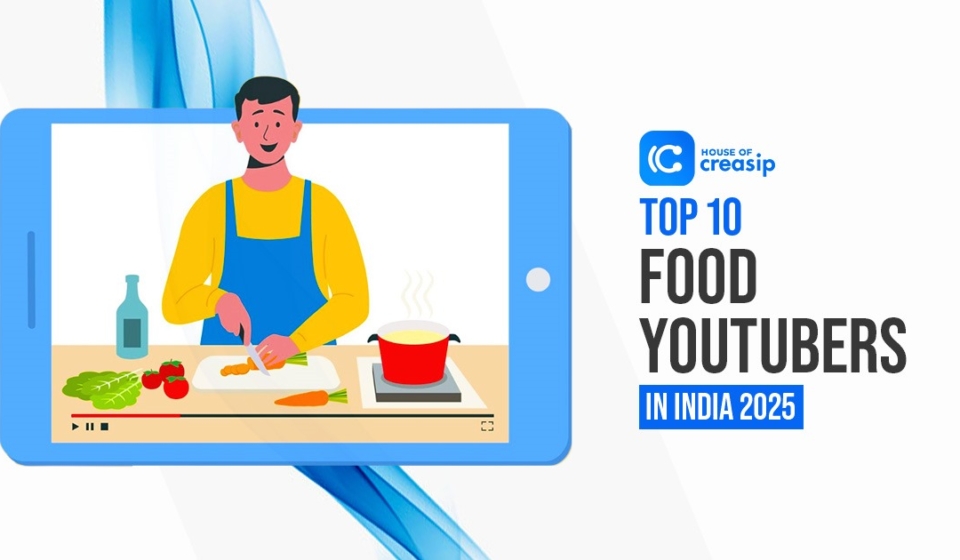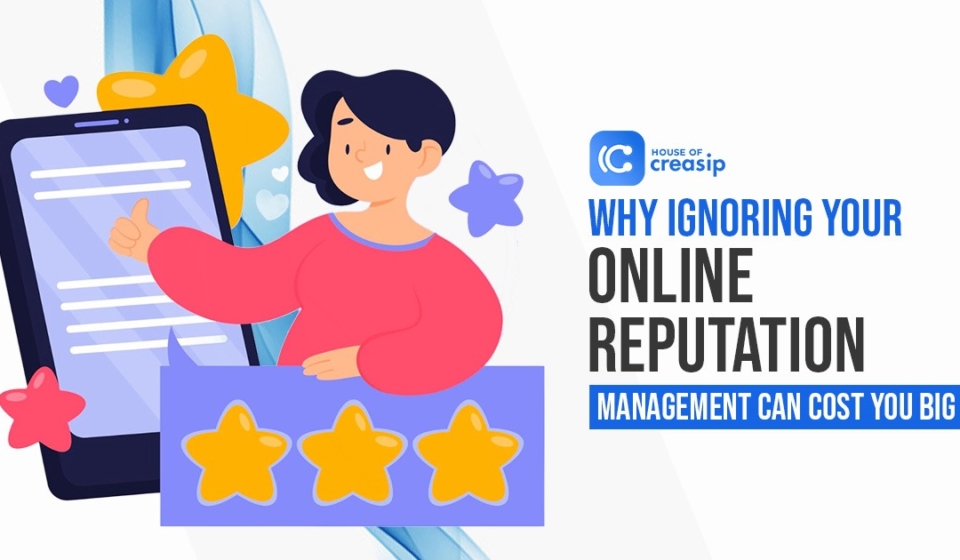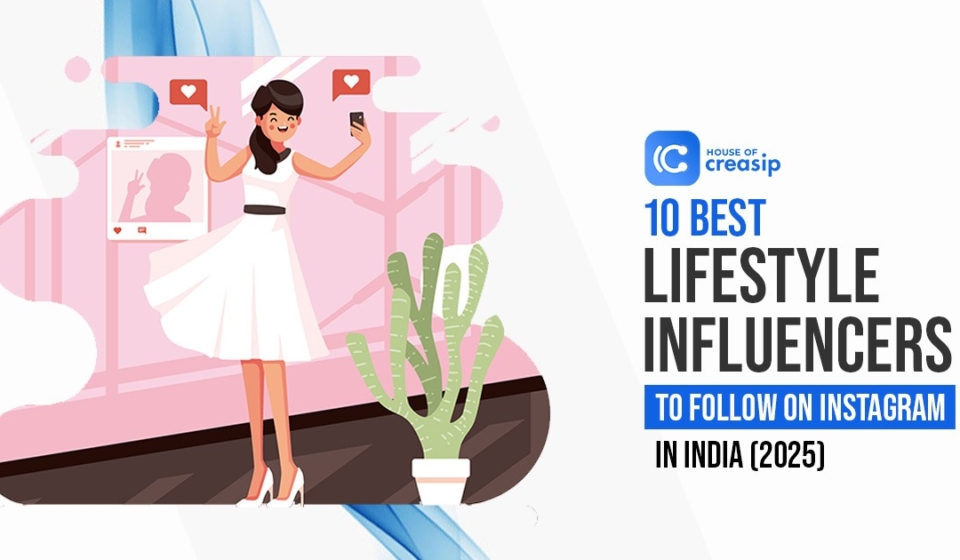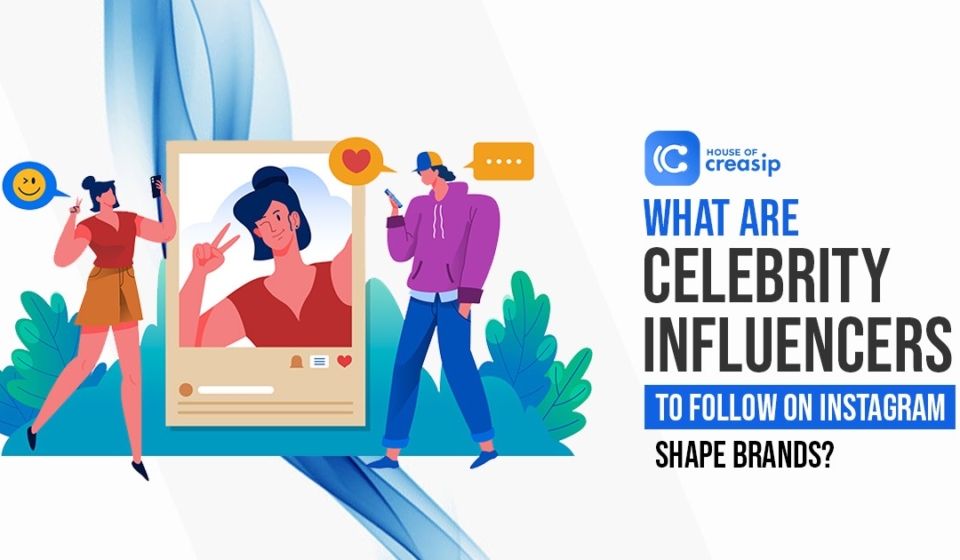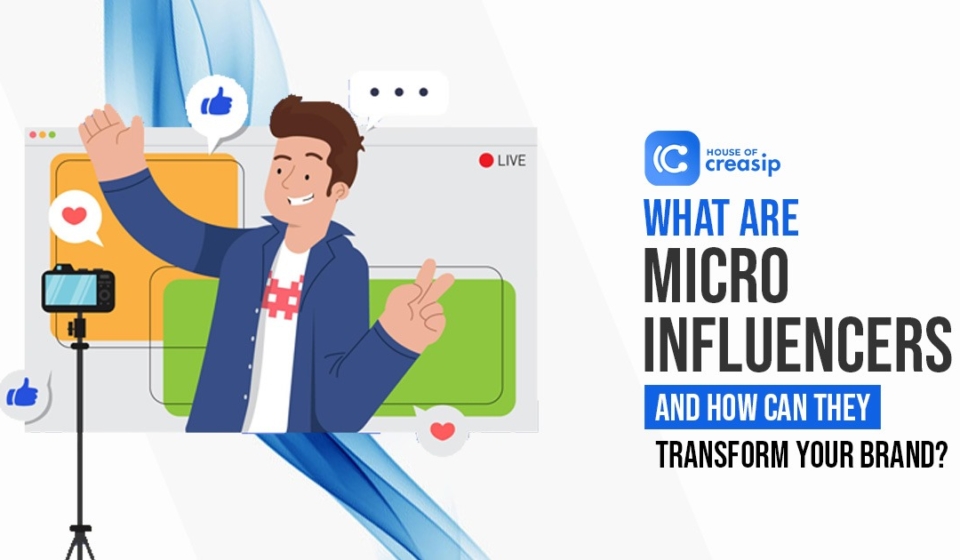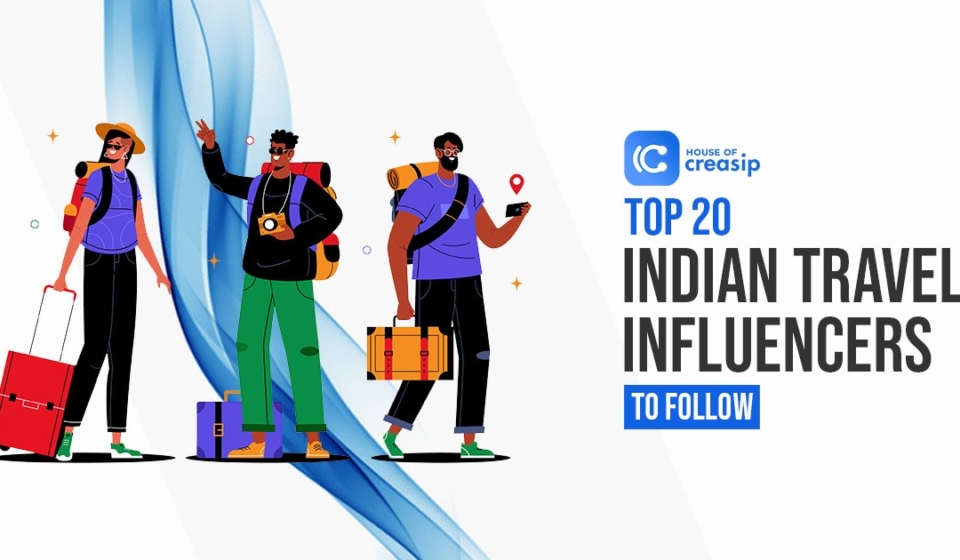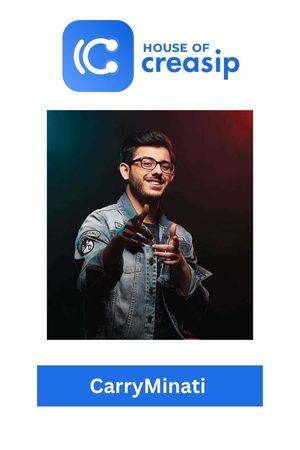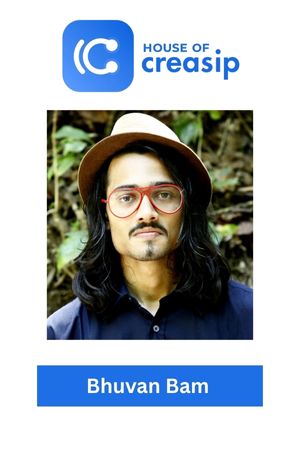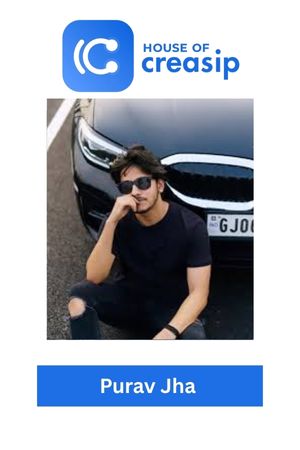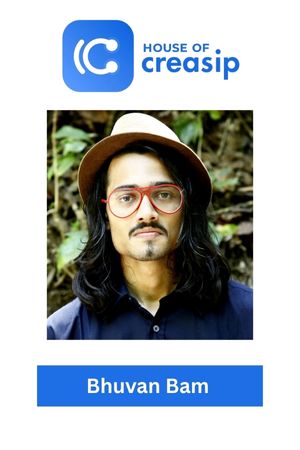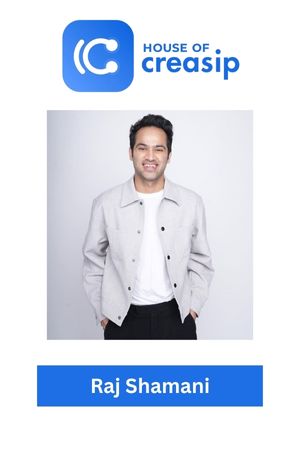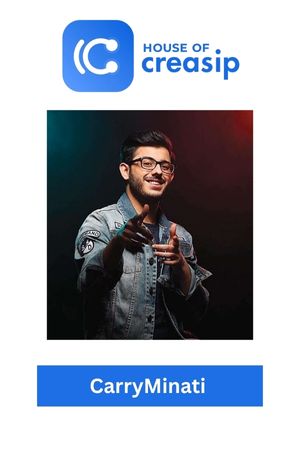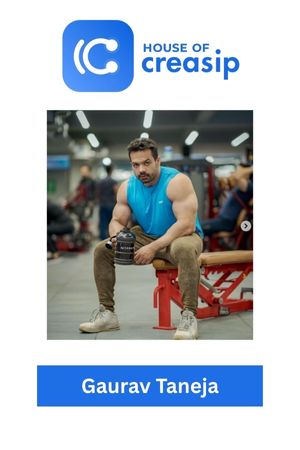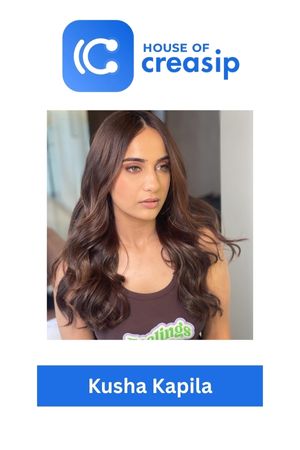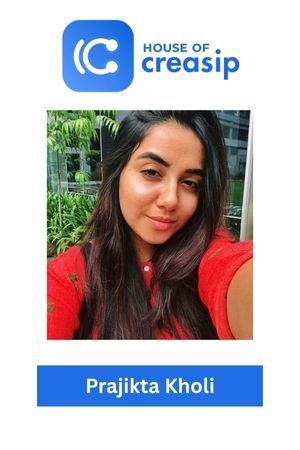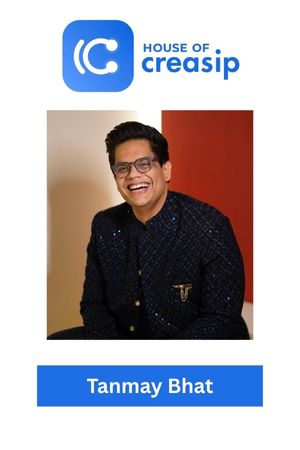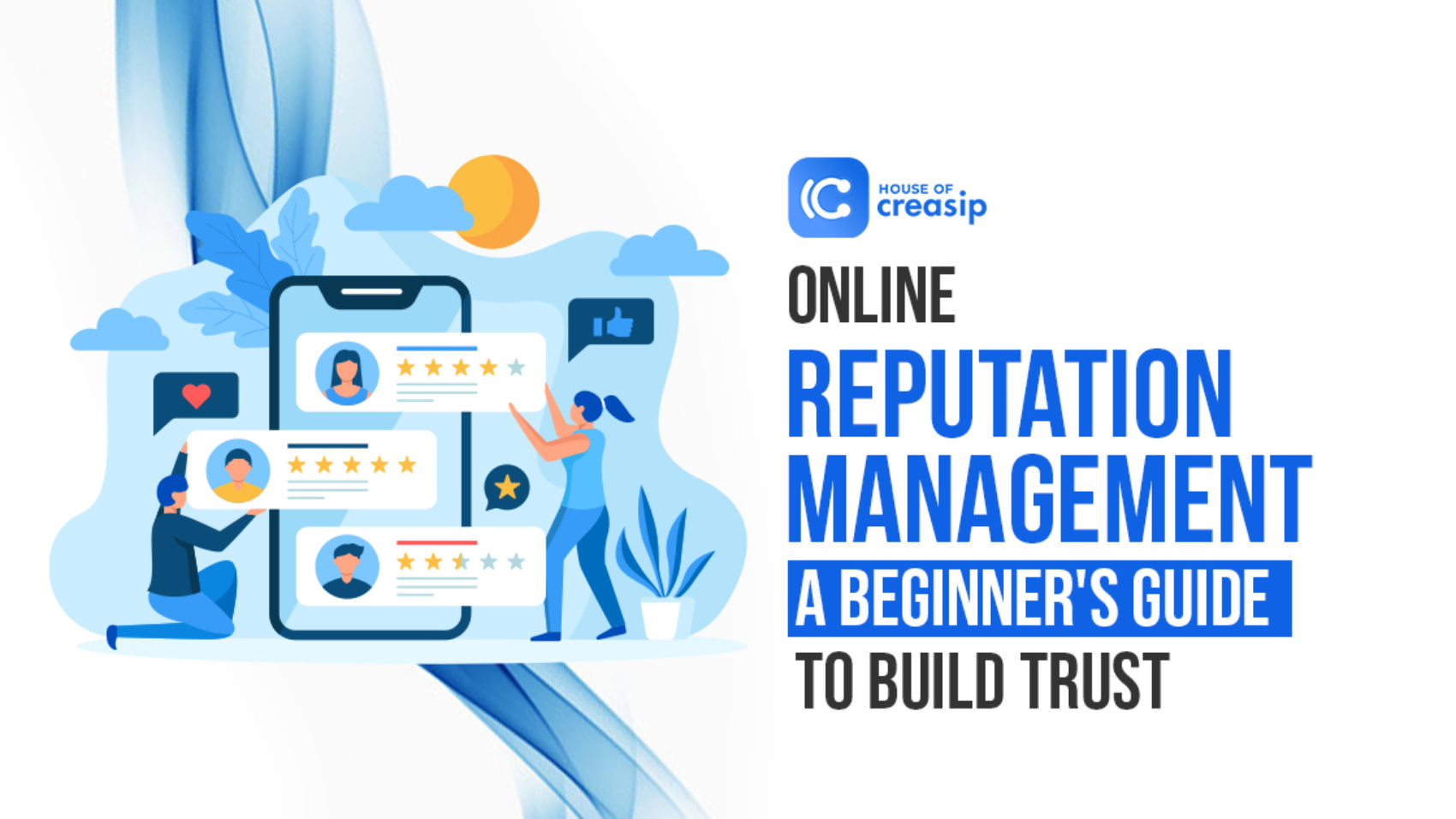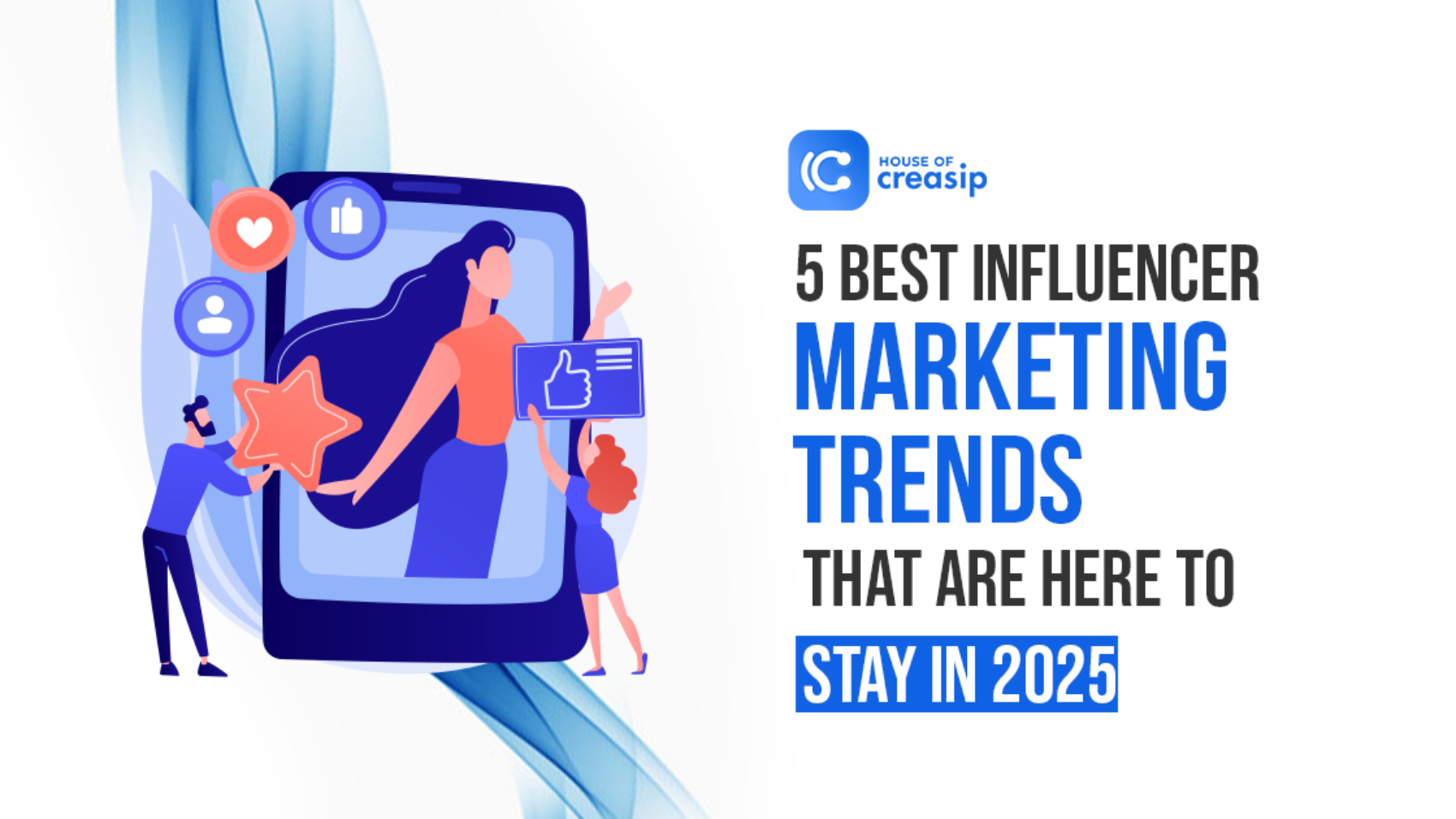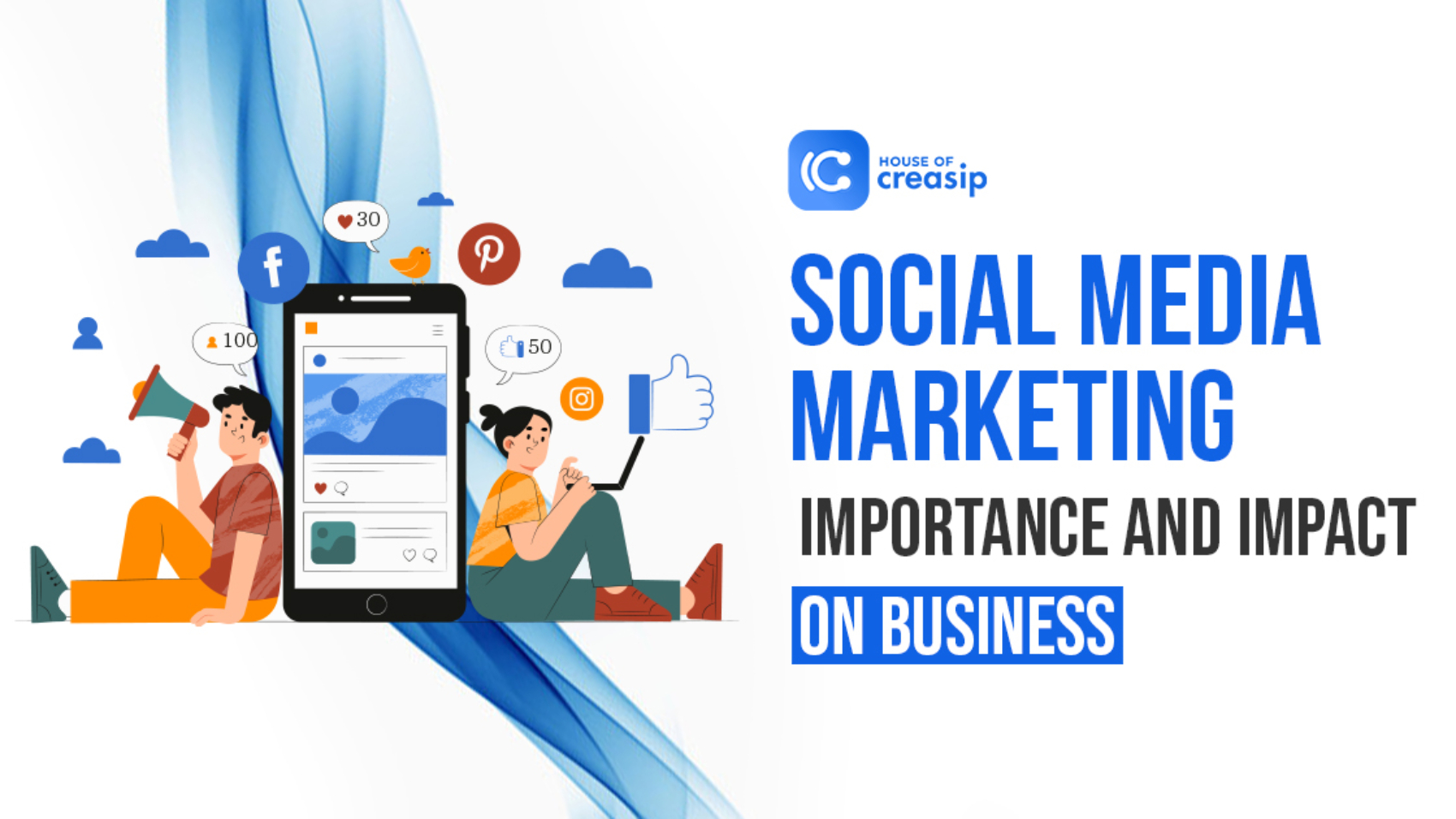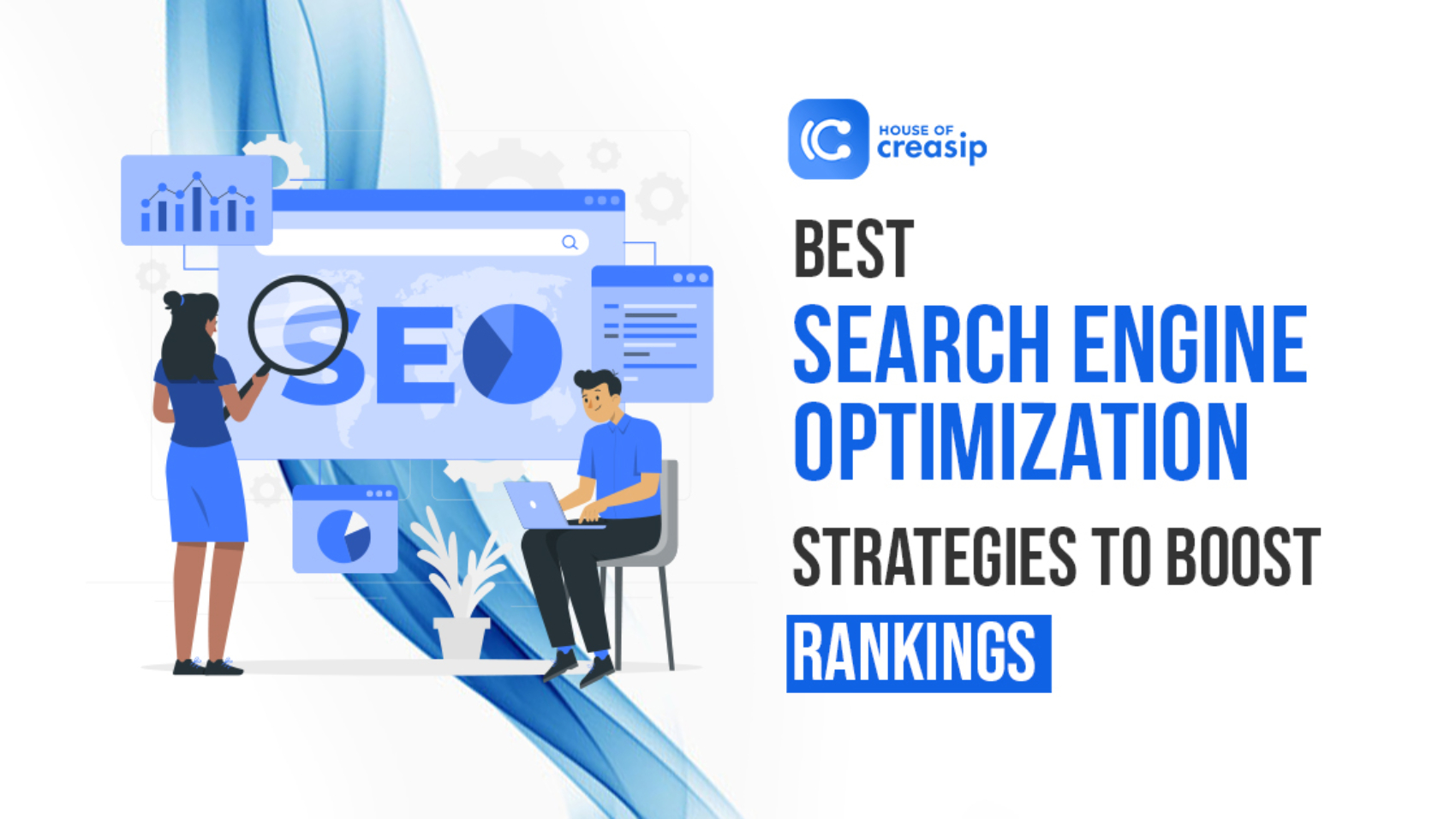Top 10 Indian Daily Vloggers on YouTube in 2025
Today, India is expanding rapidly across social media and other creative fields, continuously diversifying its talents. The country is witnessing a massive increase in daily vloggers. They are flourishing and consistently matching global standards.
House of Creasip, the largest influencer marketing agency in India, presents you with Indian daily vloggers who create engaging videos that include travel diaries, family moments, behind-the-scenes and lifestyle-related videos. They make videos that are relatable to all ages and regions. Many creators, such as Sourav Joshi and Gaurav Taneja, are among the top 10 Indian daily vloggers on the YouTube charts.
Ready to dive in and explore the leading Indian daily vloggers whose content will keep you hooked on YouTube? Let’s begin.
1. Sourav Joshi (Sourav Joshi Vlogs)
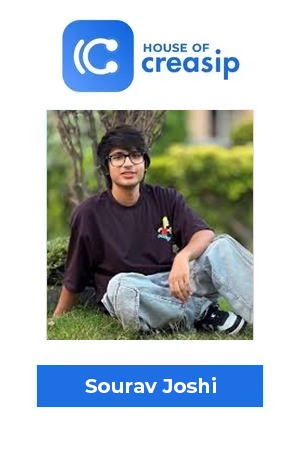
Sourav Joshi is India’s number 1 daily vlogger on YouTube in 2025, often called India’s number one blogger in the daily content space. He posted his first vlog in 2019, in which he showed his daily life and his family. Millions of people love him because he has an appealing and charming personality and because he is relatable. He consistently uploads content, which keeps the audience hooked to his channel. Sourav Joshi’s daily vlogging journey became widely known through his “365 videos in 365 days” challenge in 2020. Beyond vlogging, he is passionate about drawing and shares his artwork with fans.
Subscribers: 34.3 million
Focus: Daily life, Family moments, Travel diary
Post Frequency: Daily uploads
2. Gaurav Taneja (Flying Beast)
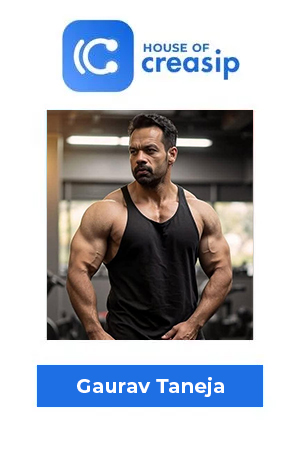
Gaurav Taneja is known for his famous daily vlogging YouTube channel, Flying Beast. There, he talks about his life with his wife, Ritu Rathee, and their daughter. Through his videos, he has captured a massive following that loves him for his relatable, knowledgeable, and candid daily-life content. Apart from vlogging, Gaurav has a brand called “Beast Life”, which provides protein supplements. On his channel, Gaurav also talks about aviation. Recently, he discussed the Air India 171 crash, which happened in Ahmedabad on 12 June 2025. He remains one of the most-watched Indian family vloggers on YouTube.
Subscribers: 9.3 million
Focus: Fitness, Family vlogs, Aviation awareness
Post Frequency: Approximately 2 to 3 videos a week
3. Elvish Yadav (Elvish Yadav Vlogs)

Elvish Yadav is well-known for his desi style comedy and for appearances in reality TV shows, such as being a wildcard entry in Big Boss OTT 2. Besides comedy, he is also one of the famous daily vloggers, sharing his daily life, house tours, family outings, and reaction videos. His channel is watched by people who love vlog videos with Haryanvi humour and relatable storytelling. He has earned a strong position among the top Indian daily vloggers on YouTube.
Subscribers: 8.56 million
Focus: Lifestyle and Personal content
Post Frequency: 1-2 times a week
4. Armaan Malik (Malik Vlogs)

Armaan Malik, on his Malik Vlogs YouTube channel, shares his real and daily life with his unique family, including his two wives, Payal and Kritika, and their children. His content includes his daily routine, festival events, trip diaries, and moments with his close-knit family. He is widely known for his open and unconventional relationships in the family. His channel is one of the fastest-growing Indian family vloggers on YouTube.
Subscribers: 8.24 million
Focus: Family and Lifestyle content
Post Frequency: Over 7 videos per week
5. Prajakta Koli (Mostlysane)

Prajakta Koli is widely known for her channel “Mostlysane”. On her channel, she shares videos in multiple niches, including observational humour, behind-the-scenes moments, daily life, and mental health, where she does real talk with her fans. By making her content engaging, diverse, and covering many niches, she has become instantly relatable and famous. She stands out as one of the few Indian vloggers who share mental health stories in a meaningful way.
Subscribers: 7.29 million
Focus: Humour, Mental health, Lifestyle
Post Frequency: 1-2 videos per week
6. Jannat Zubair (Jannat Zubair Rahmani)

Jannat Zubair shares a combination of her life, personal moments, and festivals on her vlog channel. In her videos, she shares her life off-screen and connects with her fans through funny, relatable, unfiltered content. She also creates unique videos for her fans, such as music videos and makeup tutorials. She is part of a new wave of India’s vlog YouTube channels that blend entertainment with lifestyle.
Subscribers: 6.39 million
Focus: Lifestyle and Relatable
Post Frequency: Once a month
7. Nikhil Sharma (Mumbiker Nikhil)
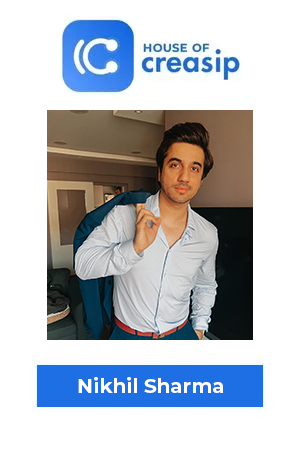
Nikhil Sharma is prominent for his channel “Mumbiker Nikhil”. In the past, he was a motovlogger who shared his solo motorcycle travels. He has now transitioned into a lifestyle vlogger, creating content about his family, daily life, moments with his children, and travel stories. Mumbiker Nikhil also shares motivational content. He is one of the well-known Indian travel vloggers who post daily, or at least several times a week.
Subscribers: 4.1 million
Focus: Travel, Family, Daily vlogging
Post Frequency: 4-5 videos per week
8. Sambhavana Seth (Sambhavana Seth Entertainment)
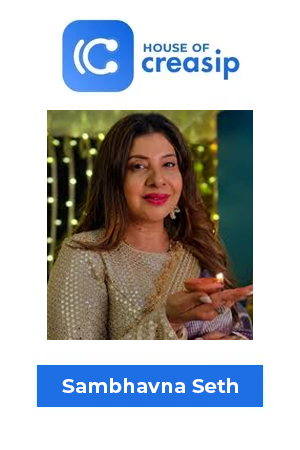
Sambhavana Seth is a famous daily vlogger who used to be an actor in Indian daily soaps and more. She shares her routine, her three dogs, and documents moments from challenging to celebratory, such as her IVF treatment, her husband’s acting journey, and more. She is one of the most authentic voices among India’s vloggers, particularly in the family and personal storytelling niche.
Subscribers: 3.73 million
Focus: Family, Authentic storytelling
Post Frequency: 7 videos per week
9. Saba Ibrahim (SabaKaJahaan)

Saba Ibrahim is also known by her YouTube channel “Saba Ka Jahaan”, which she made in 2017. She showcases a blend of fashion, family, her routine and moments, and is loved for her grounded nature. She highlights her heartfelt storytelling and cultural authenticity, which enables her to connect with her audience on a personal level. She is growing steadily among Indian vloggers who focus on family and lifestyle.
Subscribers: 3.71 million
Focus: Fashion, Family, Personal storytelling
Post Frequency: 2-3 videos per week
10. Anmol Jaiswal (Indian Backpacker)

Anmol Jaiswal is known for his channel “Indian Backpacker,” where he shares stories of travelling in India and internationally. Recently, he shared his trip to Japan and provided information to his viewers on different markets and Japan’s famous kids’ anime “Doremon” and more. His content is ideal for people who enjoy watching Indian travel vloggers who post daily or frequently.
Subscribers: 3.3 million
Focus: Affordable travel and Experience
Post Frequency: 2 videos per week
Conclusion
The rise of daily vlogging in India has changed how viewers engage with YouTubers and creators. As highlighted in the above list, India’s top 10 daily vloggers on YouTube, such as Sourav Joshi, Flying Beast, and Elvish, are leading at the top. Some of these creators even represent the highest subscribed YouTube channel in India within their genre.
The top daily vlogging creators are consistent, relatable, and authentic, but have extraordinary influence. These creators share various things in their lives, including travelling, routines, sensitive topics, challenges, celebratory events, and more.
Their success in the field of vlogging showcases that the audience cares and loves content that shares a real connection and shows transparency. Through their success, they inspire young creators to grab the camera and share their lives and hobbies online—and turn content creation into a full-time career. Whether you’re seeking India’s No. 1 vlogger on YouTube 2025 or just discovering new vlog videos, this list offers something valuable for every viewer.
If you’re a startup or a brand looking to collaborate with daily vloggers, connect with House of Creasip, the largest influencer marketing agency in India, Today!
Collaborate Now!
FAQs:
Q1. Who are Indian daily vloggers?
Indian daily vloggers are content creators who capture moments of life’s experiences, personal journeys, travel interests, food and daily activities/routines. They share their experience in daily or periodic video blogs (vlogs) on social media platforms such as YouTube, Instagram, so audiences can better understand their lifestyle, relatability and more of sense of community.
Q2. Why are daily vloggers in India so popular?
Daily vloggers in India are popular because they provide viewers with a real, raw experience of the daily aspects of life, such as family time, food, travel, culture, etc Audiences find comfort in relatable content and develop a sense of emotional connection to their favourite vloggers. All of this authenticity leads to millions of views and followers.
Q3. Why should brands partner with daily vloggers through an agency?
Influencer marketing agencies provide expertise in selecting the right vlogger with an audience that fits your brand’s target audience and will manage all aspects of the contract, measuring performance and obtaining approvals on the content, which leads to saving your brand’s time and making you get the most out of their influencer efforts.
Q4. What kind of content do daily vloggers create for brand collaborations?
Daily vloggers talk about your brand seamlessly into their content, such as through product placements, reviews, lifestyle integration, unboxing, or storytelling. Influencer marketing agencies like House of Creasip guide how the promotion fits naturally without disrupting the vlogger’s daily video narrative.
Q5. Are daily vloggers more effective than traditional celebrities for brand promotions?
Yes, often, daily vloggers have higher reach and stronger emotional connections with their followers compared to traditional celebrities. Influencer marketing agencies highlight this authenticity to brands, making daily vloggers a cost-effective yet impactful choice for them.
Source:
Sourav Joshi’s Profile, Net Worth, Age, Height, Relationships
Gaurav taneja Biography, Age, Height, Net Worth
Elvish Yadav Height, Age, Girlfriend, Family, Biography
Armaan Malik (YouTuber) Age, Girlfriend, Wife, Children, Family, Biography
Jannat Zubair Rahmani Height, Age, Boyfriend, Family, Biography & More
Mumbiker Nikhil Biography- Net Worth, Age, Family
Sambhavna Seth Age, Husband, Family, Biography
Saba Ibrahim Age, Boyfriend, Husband, Family, Biography
Anmol Jaiswal Biography, Age, Net Worth, Wife and Car Collection



